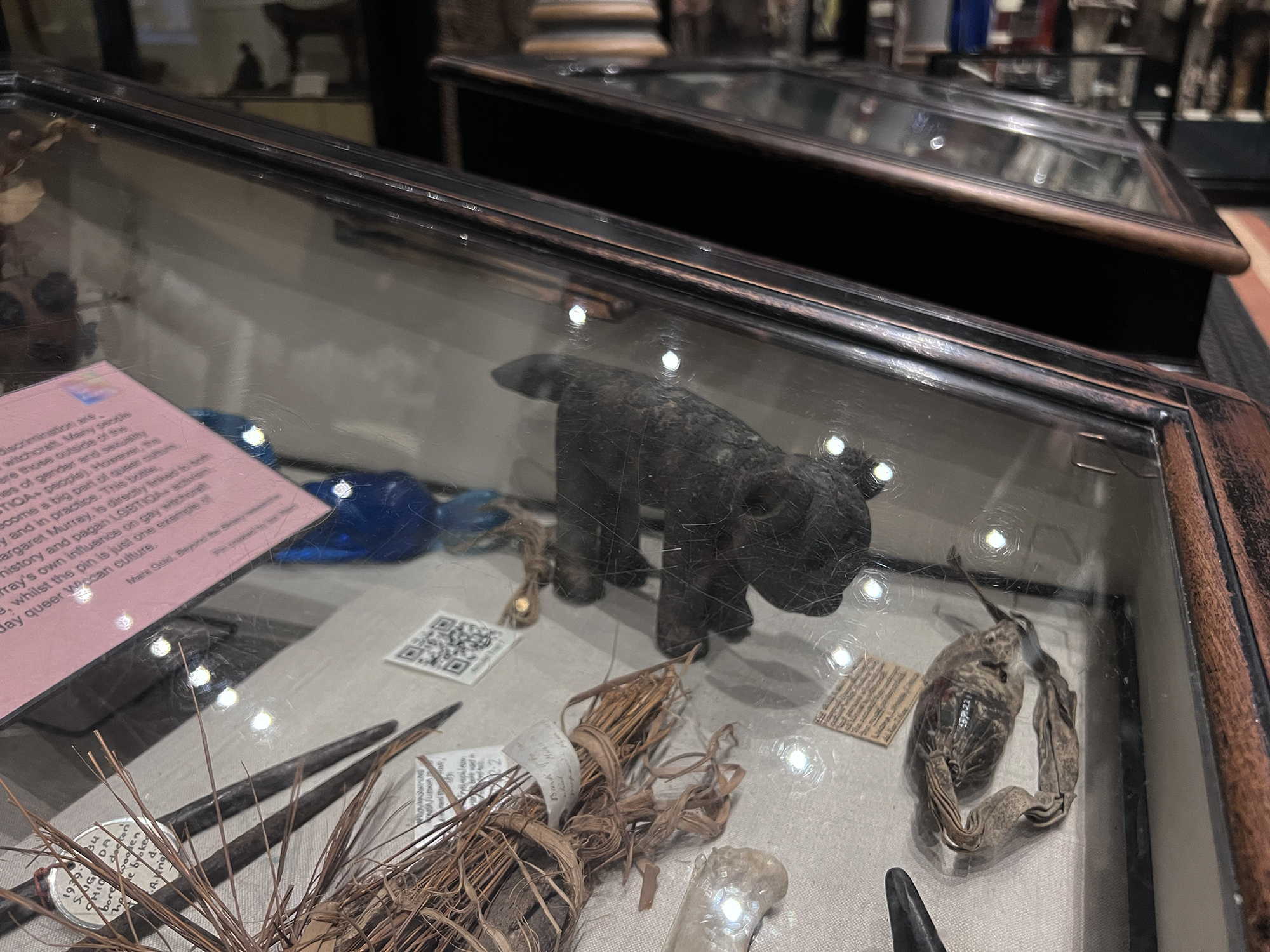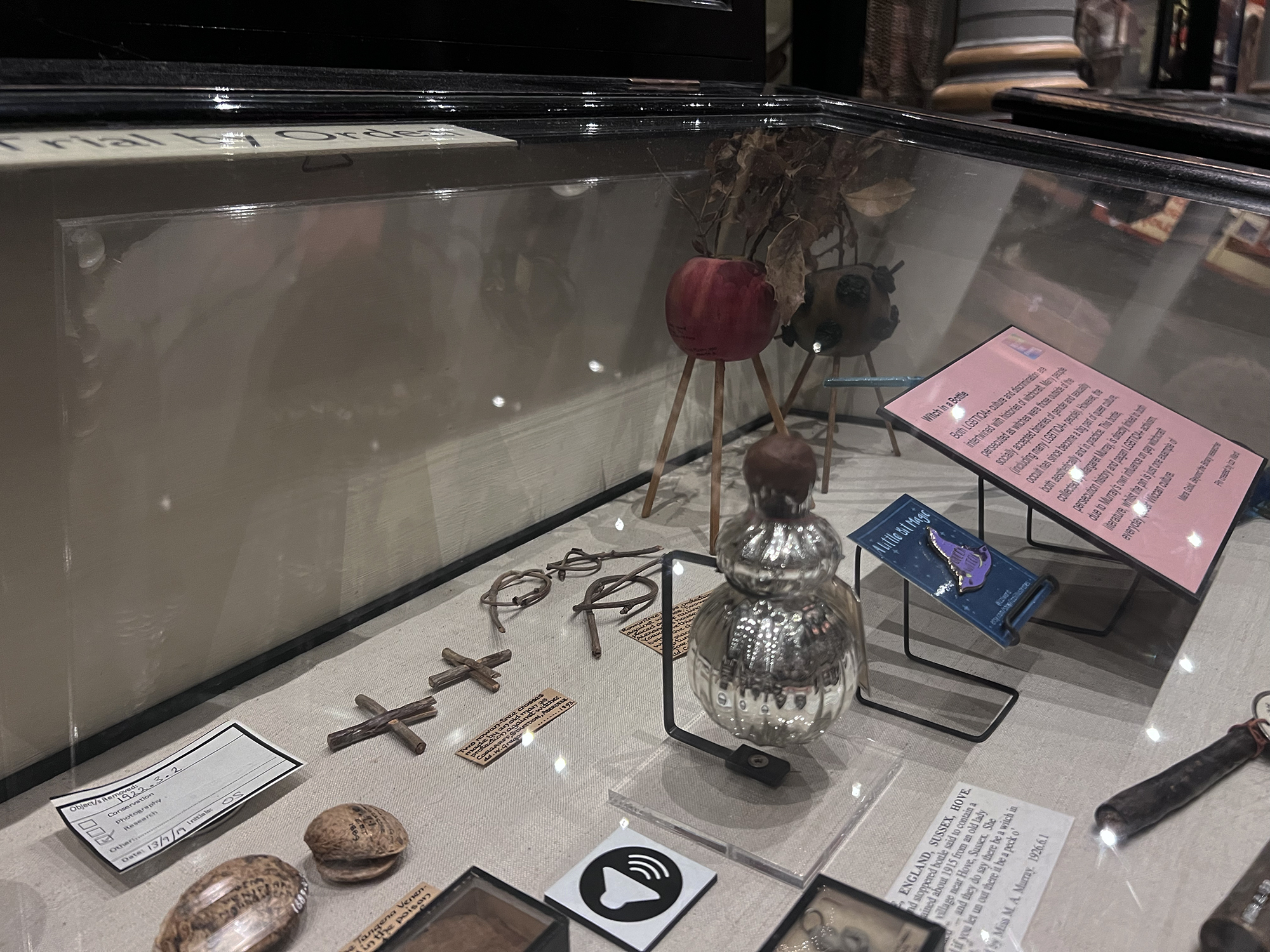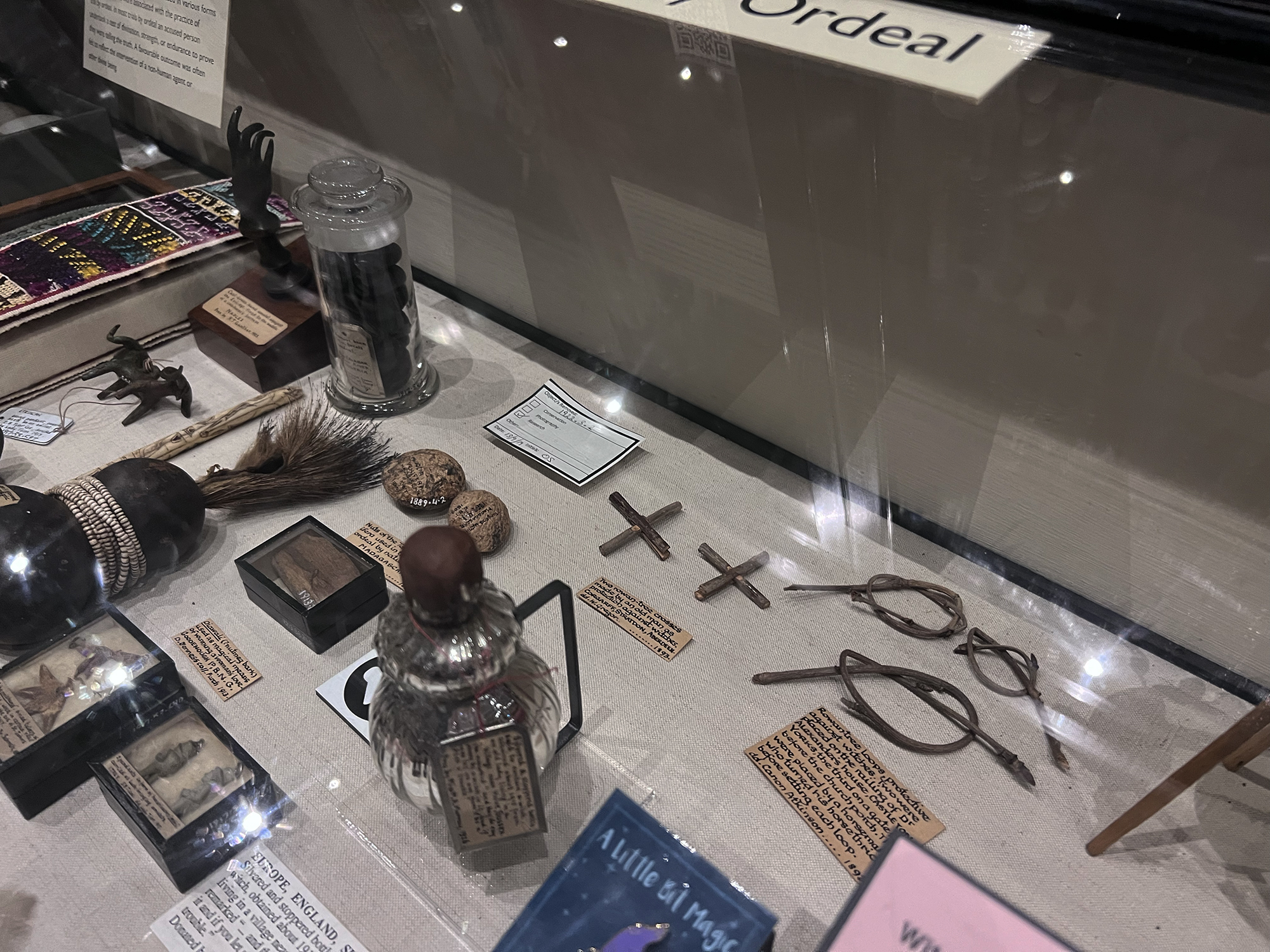Rowan tree crosses and loops
Used as protection against witchcraft, England
PRM 1893.14.3–.4; 1893.18.1–.3
Case C. 31.A
These small, delicate objects are crafted from twisted loops and folded strands of wood from the rowan tree. Used as protection charms and hung on doors and above fireplaces in homes across the British Isles, they guarded thresholds to deflect bad luck and prevent malevolent forces from entering. Rowan crosses are sometimes tied with red thread and can also include the red berries from the rowan tree. In English folklore, it is thought that the rowan tree’s protective powers are linked to the presence of a small pentagram at the base of the berries they produce. Five-pointed stars are associated with protection from malignant witchcraft, as is the colour red.
The association of rowan trees with protection, was widespread across Europe from the cultural histories of the Celtic peoples to accounts of divination in Norse cultures in Scandinavia.
Rowan crosses are sometimes known as ‘Bride’s Crosses’ and were also said to have been tied to animals and carried in pockets as amulets as well. In 1597, King James VI of Scotland condemned their use in his compendium on witchcraft, the Daemonologie, which was republished in England in 1603. These examples were acquired by the Pitt Rivers Museum towards the end of the nineteenth century. There is still an active trade in rowan crosses, with modern examples being made and used today.
This object featured in the video artwork 'Presence and Absence' by Marina Abramović.
It is one of seven objects you can read about that was part of the exhibition trail on the ground floor of the museum.





